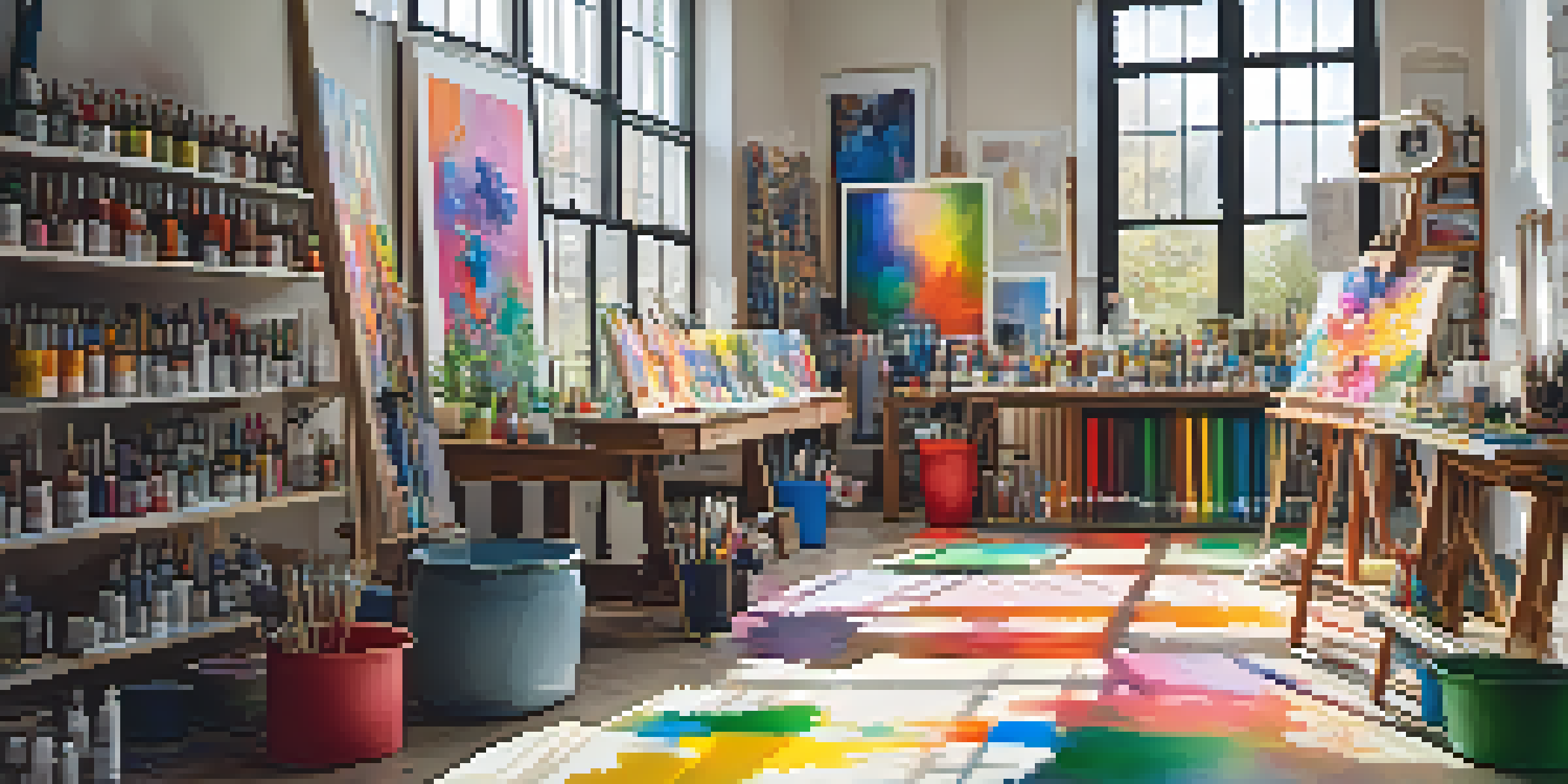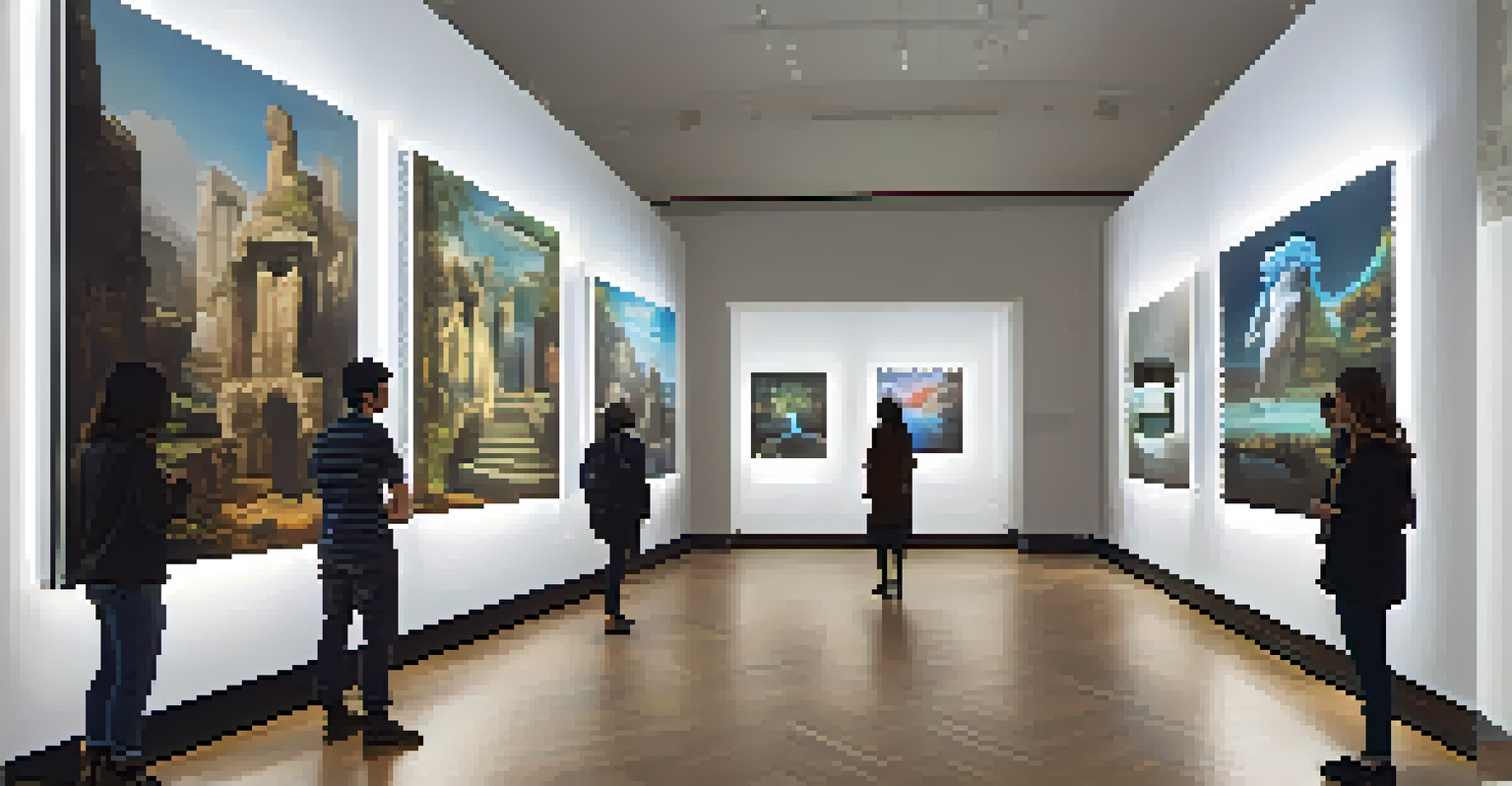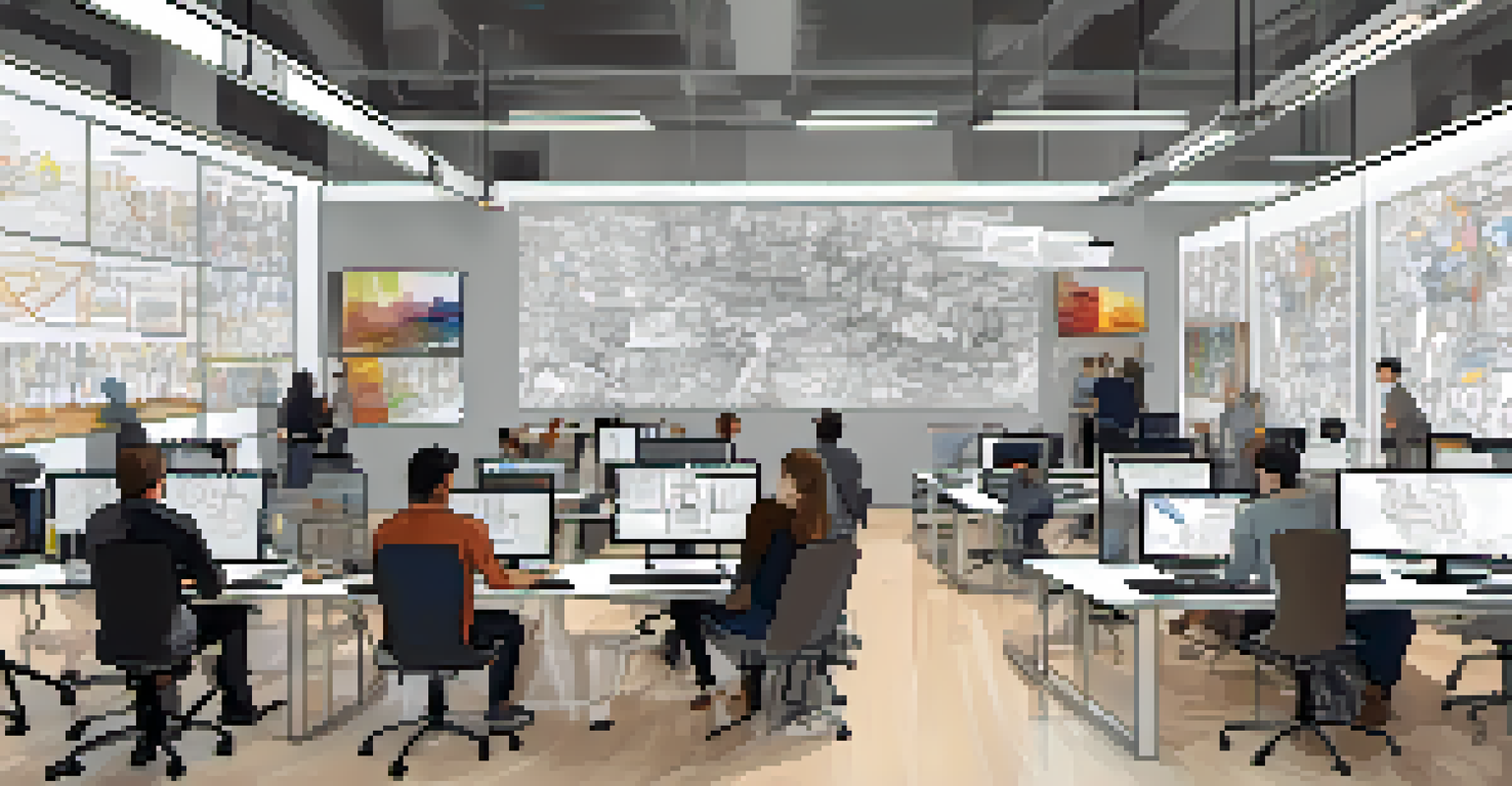Future Collaborations: Artists and Tech Companies Unite

The Power of Collaboration: Artists and Tech Together
In today's fast-paced digital landscape, the synergy between artists and tech companies is more crucial than ever. By joining forces, these two worlds can create innovative solutions that not only enhance artistic expression but also push technological boundaries. Think of it as a beautiful dance where creativity meets functionality, resulting in groundbreaking projects that captivate audiences.
Collaboration allows us to know more than we are capable of knowing by ourselves.
For example, consider how musicians are now using AI to compose new melodies or visual artists are employing virtual reality to create immersive art experiences. These collaborations are not just about blending ideas; they’re about revolutionizing how we perceive and interact with art. This partnership can lead to fresh, exciting experiences that resonate with diverse audiences.
As we look to the future, the potential for these collaborations seems limitless. They not only pave the way for new artistic mediums but also expand the reach of technology, making it more accessible and relatable. Ultimately, when artists and tech innovators unite, they inspire each other to think outside the box, leading to unprecedented creativity.
Examples of Successful Collaborations in the Past
History is full of examples where art and technology have collided beautifully. One standout instance is the collaboration between the visual artist Refik Anadol and various tech companies to create stunning data-driven installations. These projects transform complex data into breathtaking visual narratives, showcasing the artistic potential of information.

Another notable example is the partnership between the music industry and tech firms like Spotify, which has not only changed how we consume music but also how artists promote their work. Through innovative tools and platforms, artists can now reach a global audience in ways that were previously unimaginable. This has democratized the music industry and allowed independent artists to thrive.
Collaboration Fuels Innovation
The partnership between artists and tech companies leads to groundbreaking projects that enhance both creativity and functionality.
These examples highlight the diverse possibilities that arise when artists and tech companies collaborate. By combining their unique perspectives and skills, they can create work that not only entertains but also challenges societal norms and inspires change. This track record of success sets a promising tone for future partnerships.
Emerging Technologies Shaping Artistic Expression
As technology continues to evolve, so too does its impact on art. Tools like augmented reality (AR) and artificial intelligence (AI) are redefining the limits of creative expression. Imagine walking through a gallery where the paintings come to life through AR, or listening to a piece of music that adapts based on your emotions, thanks to AI.
Creativity is thinking up new things. Innovation is doing new things.
These technologies are not just gimmicks; they provide artists with new avenues for exploration. For instance, many visual artists are using AR to overlay digital elements onto physical artworks, creating an interactive experience for viewers. This fusion of digital and physical art has the potential to engage audiences in ways that traditional methods cannot.
Moreover, artists can leverage machine learning algorithms to analyze patterns in their work, helping them to refine their style or even generate new ideas. The beauty of these emerging technologies lies in their ability to enhance creativity, allowing artists to push boundaries and challenge the status quo.
The Role of Social Media in Artist-Tech Collaborations
Social media has transformed how artists connect with tech companies and their audiences. Platforms like Instagram and TikTok serve as powerful tools for artists to showcase their work and engage with fans. This visibility can attract the attention of tech companies looking for creative partners, sparking fruitful collaborations.
Additionally, social media allows for real-time feedback, enabling artists to test new ideas and refine their projects based on audience reactions. This immediacy can lead to more relevant and engaging art, as creators can adapt their work to fit the evolving tastes of their audience. It’s a two-way street that fosters a vibrant creative community.
Emerging Tech Redefines Art
Technologies like AI and AR are expanding artistic expression, allowing artists to create interactive and immersive experiences.
Furthermore, social media campaigns can amplify the reach of collaborative projects, turning them into viral sensations. When artists and tech companies create buzzworthy content together, they not only showcase their partnership but also create a shared narrative that resonates with viewers, enhancing brand loyalty and engagement.
Challenges of Collaboration Between Artists and Tech Firms
While the potential for collaboration is exciting, it’s essential to acknowledge the challenges that come along with it. One significant hurdle is the differing priorities between artists and tech companies. Artists often focus on creative expression, while tech firms are driven by functionality and commercial viability. Finding a balance between these perspectives can be tricky.
Moreover, issues related to intellectual property can arise during collaborations. Artists may worry about the ownership of their work or how their creative input will be represented in a tech-driven project. Open communication and clear agreements are vital in addressing these concerns, ensuring that both parties feel valued and protected.
Lastly, the fast-paced nature of technology can be daunting for artists who may not be as familiar with new tools and platforms. Continuous learning and adaptation are crucial for artists to thrive in this environment. However, with the right support and resources, these challenges can be navigated, paving the way for successful partnerships.
The Future of Art: Predictions and Trends
Looking ahead, several trends are emerging that suggest the future of art will be deeply intertwined with technology. One prediction is the rise of immersive experiences, where viewers can engage with art through virtual or augmented reality. These experiences will likely become more mainstream, making art accessible to wider audiences.
Additionally, we may see an increase in AI-generated art, which can challenge traditional notions of creativity and authorship. As technology continues to evolve, artists will likely explore new ways to incorporate AI into their work, leading to exciting innovations that blur the lines between human and machine creativity.
Social Media Amplifies Engagement
Platforms like Instagram and TikTok enable artists to connect with tech firms and audiences, fostering collaborations that resonate widely.
Finally, sustainability will be a key focus in future collaborations. As both artists and tech companies become more aware of their environmental impact, there will be a push towards using sustainable materials and practices. This shift will not only benefit the planet but also resonate with consumers who value eco-friendly initiatives in their favorite artists and brands.
Conclusion: Embracing the Future of Collaboration
The collaboration between artists and tech companies is an exciting frontier that promises to reshape the landscape of creativity. By embracing this partnership, both parties can learn from each other and create art that is not only innovative but also meaningful. The future is bright for those willing to explore the possibilities of their combined talents.
As we move forward, it’s crucial for artists to remain open to new technologies and for tech companies to value the artistic process. This mutual respect will lay the foundation for successful collaborations that push boundaries and inspire future generations. Together, they can create a vibrant tapestry of creativity that reflects our ever-evolving society.

In conclusion, the union of art and technology is more than just a trend; it’s a movement that can lead to transformative experiences. By continuing to explore and invest in these collaborations, we can look forward to a future rich with innovation, inspiration, and artistic expression.